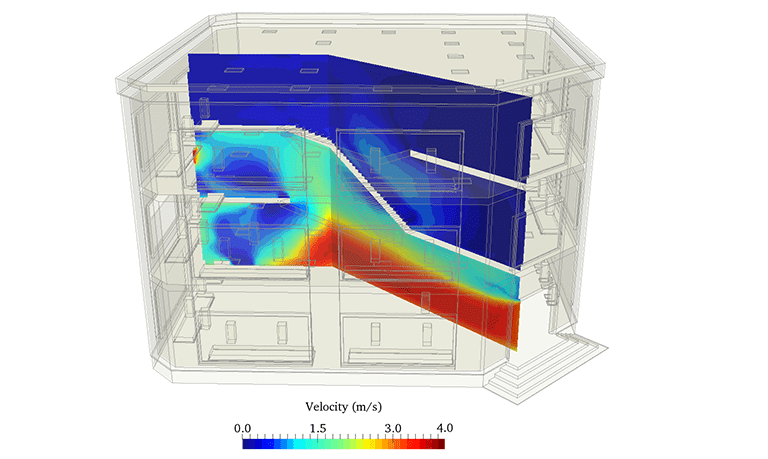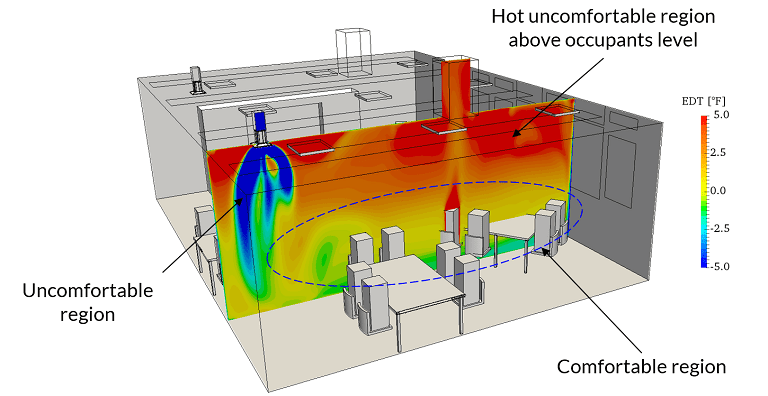Globally, buildings account for an enormous share of energy, water, and materials consumption. As a result, green building design is becoming increasingly popular in the AEC industry. Green building certification such as LEED certification of USGBC, as well as the ASHRAE Standard 189.1, provide guidelines for achieving green building status, and help mechanical, HVAC, building, and sustainability engineers optimize their designs.
Green Building Standards: ASHRAE 189.1 and LEED Certification
LEED (Leadership in Energy and Environmental Design) is a rating system developed by the U.S. Green Building Council, regulating the design, construction, and maintenance of green buildings. It is the most widely used green building rating system in the world. The LEED certification is credit-based, allowing projects to earn points across several categories.
Another standard that is helpful to keep in mind is the ASHRAE 189.1, which is the “standard for the design of high-performance green buildings”. It provides architects and engineers with a standardized approach towards designing and operating green buildings, filling the gaps of evolving building codes. It is based on other existing ASHRAE standards (such as the Energy Standard 90.1, Ventilation Standard 62.1, and Thermal Environmental Standard 55) while applying a more defined set of sustainability criteria.
Active and Passive Design Strategies

Several categories for LEED certification include design aspects relevant to energy use and air quality, making it imperative for green building designers to find the right combination of active and passive design strategies.
Active design strategies use energy-consuming mechanical systems to maintain the building, while passive design strategies rely on natural energy sources. High-performance building design places particular importance on investigating passive strategies while trying to downsize the active systems as much as possible.
Passive strategies include the use of natural ventilation and shading to provide air movement and reduce indoor temperatures and the use of solar heating to ensure thermal comfort while taking into account regional climate and ventilation timing.
HVAC Design for Green Buildings: How Can CFD Help?
In that regard, having a high-performance HVAC system is crucial. It is one of the key components of green building design, as it determines the building’s energy efficiency, life-cycle performance, and occupant productivity.
Here, the early concept and design stages are particularly important, having the largest impact on cost and performance of the HVAC system and the future building as a whole. In order to ensure compliance with relevant green building standards, a reliable validation tool needs to be used during these early design stages.
Computational fluid dynamics (CFD) is one such tool and has been adopted by many engineering companies in the AEC industry. It is a field of fluid dynamics that uses numerical analysis to simulate and solve problems involving fluid flows. With its help, mechanical and HVAC engineers can gain detailed insight into the airflow patterns, optimizing the building design to get the highest possible LEED certification.
CFD can be successfully applied to ensure compliance with many relevant aspects of green building standards associated with air flow, such as thermal comfort, indoor air quality, energy consumption and efficiency, and more. This can be highly beneficial for the planning of green building projects and in obtaining a LEED certification, where sustainable building design, optimized energy performance, and air comfort play a crucial role.
Green Building Design Workshop with Practical Examples
In order to bring the CFD simulation technology to more green building designers and engineers, Qatar Green Building Council (QGBC) and SimScale have organized a free training focused on teaching the application of fluid flow simulation in the HVAC and AEC industries.
There is no prior knowledge or software required to follow this webinar. SimScale is a cloud-based platform, which means that all the required simulation features are accessible directly from a web browser.
Sign up & check out our SimScale blog for much more!
Session 1: Energy-Efficient Designs for Buildings

In the first session of the workshop, you will discover the fundamentals of fluid flow simulation and learn how it can be used to meet the requirements of the LEED certification. We analyzed a case study showcasing how natural ventilation system design can be validated. The simulation project template used in this session can be accessed here.
Session 2: Thermal Comfort for Occupants

The second session focuses on the topic of thermal comfort. You will learn how to use CFD simulation to ensure compliance with different standards for thermal comfort in buildings. We looked into a case study where thermal comfort was optimized in a classroom. A public project similar to the one presented in this session can be found here.
Why Investing in Green Building Design Is Worth It
A common misconception about green building design is that it is expensive. This perspective, however, focuses solely on the up-front cost, failing to consider the overall life-cycle cost of the building. While it is true that most green buildings cost a premium of <2%, they yield 10 times as much over the entire life of the building. [1] The cost savings come from the efficient use of utilities, decreased energy bills, higher worker productivity, and more, exceeding the additional up-front costs by 4-6 times. Studies of the commercial real estate market have also found that LEED-certified buildings achieve significantly higher rents, sale prices, and occupancy rates. [2]
If you want to read more about how CFD simulation helps engineers and architects improve building performance, download this free white paper.
References
- Leon Alevantis, Adam Berman, Evan Mills, Jeff Perlman. The Cost and Financial Benefits of Green Buildings, November 3rd, 2008
- Pat McAllister. Green Noise or Green Value? Measuring the Effects of Environmental Certification on Office Property Values. 2009



